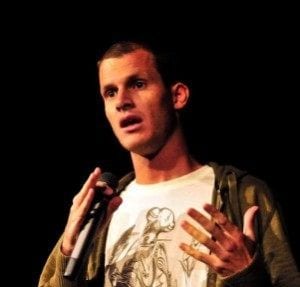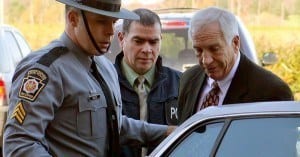
It didn’t seem possible that HBO would rally so quickly after Game of Thrones, but the mini-series Chernobyl has been watched by eight million people already, in fact breaking some records set by Game of Thrones.
The series covers the cataclysmic events surrounding the explosion of the Chernobyl nuclear reactor and the tragic story of the damage control efforts. Chernobyl is engrossing for many reasons, but perhaps most of all because not much is known about it—the Soviet media disseminated very little information about the disaster. To this day, the series notes, the total death toll caused by the explosion is officially on record in Russia is 31. More realistic estimates by outside entities fall between 4,000 and 96,000.
There have been a handful of books published about the explosion—the biggest and most damaging of its kind—and one or two small documentaries attempting to fill the narrative vacuum where the story of the Chernobyl should be.
This lack of information meant that a lot of viewers went into the series wondering what on the show was truth and what was dramatic embellishment, myself included. Not even ten minutes into episode one, I pulled up google maps to figure out where exactly in the world Chernobyl is (in Ukraine, just south of Belarus and west of Russia), and then following that, I searched the Wikipedia article to figure out what the death toll was—wondering the whole time why my world history lessons hadn’t left a greater impression on me.
If Chernobyl is going to be my main source of information about Chernobyl (and let’s be realistic—I’m probably not going to read Voices from Chernobyl by Svetlana Alexievich or Midnight in Chernobyl by Adam Higginbotham), then I wanted to know how much of the series I could trust. So below, a couple things that were right in Chernobyl, and a couple that were wrong.
MYTH: The Chernobyl fire gave off twice as much radiation as Hiroshima
Both Chernobyl and the bombing of Hiroshima were cataclysmic nuclear disasters; however, it’s difficult to compare the radiation exposure of the two events. In Hiroshima, the major health impact was caused by direct exposure to radiation—the bomb was detonated on a highly populated area.
In Chernobyl, a lot of radioactive material was brought into the atmosphere, which was then spread over a very large area and ingested by people over a long period of time.
FACT: A young firefighter with a pregnant wife died in a hospital shortly after the explosion
The story of Lyudmilla and Vasily Ignatenko is captured quite faithfully by Chernobyl. Vasily, a firefighter, left in the middle of the night, rushing to the power plant. He promised to wake his wife when he got home. But as one of the firefighters who touched a piece of the graphite core of the nuclear reactor, he suffered severe radiation poisoning and was taken to the hospital.
Lyudmilla visited her husband and was ordered not to touch him. “If you start crying, I’ll kick you out right away,” she recalled being told in the book Voices from Chernobyl. Lyudmilla was pregnant at the time but lied to the radiologist to see her husband.
Vasily died 14 days after the accident and was buried, as the series shows, in a zinc coffin. The documentary even shows Lyudmilla carrying her husband’s shoes, which couldn’t fit around his swollen feet. Lyudmilla eventually gave birth to her baby, who died after four hours.
MYTH: A steam explosion would have left Europe uninhabitable
In the wake of the initial blast, nuclear physicists feared a second explosion caused by melting corium coming into contact with groundwater. In the second episode, the team begin taking precautions to mitigate a follow-up explosion, one would carry a force of 2 to 4 megatons, which would wipe out “the entire population of Kiev and a portion of Minsk,” impacting “all of Soviet Ukraine, Latvia, Lithuania, Belarusia, Poland, Czechoslovakia, Hungary, Romania, and most of East Germany.”
Greenpeace senior nuclear energy expert Jan Haverkamp said there were too many hypotheticals considered in this scenario. “They’re not saving the world,” he said. “That situation might play out if all of the melting corium hit groundwater,” he added, but when corium starts melting, it melts “in a very uneven way.” The claim that a second explosion would carry a force of up to 4 megatons, he said, was “an exaggeration.”
FACT: They tried using robots, but eventually resorted to human labor
As the horrifying reality that many men will be essentially given a life sentence from their involvement in the clean-up efforts began to set in, the Soviets considered different options, such as using robots to clear the most dangerous areas.
Like in the show, they did try this, but eventually had to resort to human labor when the radiation was too great for the machinery they were using. They had men clear 100 tons of radioactive debris in 90-second shifts from the area.
Advanced U.S. robots could have aided the decontamination and saved human lives, but the political climate at the time dissuaded the two nations from working together.
MYTH: Naked miners
As a part of the clean-up, 400 miners were recruited to dig a tunnel underneath the reactor to stop the radioactive lava (created by the boron and sand dropped on the fire in an attempt to set it out) from burning through the containment structure and contaminating the groundwater. It was feared that this would have far-reaching consequences.
In the show, the miners complain about being too hot and ask for fans (they are digging under a fire, after all); however, they are told that using fans would be dangerous. In protest, they dig naked.
In reality, there are varying accounts of how much clothing got taken off, said Craig Mazin, series creator, writer and executive producer. More than one account said they took it all off, but it was disputed in other accounts. The scene was written that way to portray the miners as a defiant and powerful force.
“Mikhail Gorbachev himself said the coal miners sort of scared him. They were tough. And they chose willingly to [build these tunnels] in part because of a general sense of honor and community,” Mazin said.
Another part of the miner’s story that didn’t unfold on screen is truly depressing—in the end, the tunnel the workers risked their lives to build weren’t necessary at all. The uranium never melted through the concrete pad that stood between it and the soil that would lead to the water.
However, at the time, not building the tunnels wasn’t an option. “It’s just a chilling fact,” Mazin explained. “I would put myself in [Valery] Legasav’s shoes there and you start to realize the cruelty of the situation. You have no choice. A 50/50 chance that you’re going to poison the Black Sea forever is not acceptable.”
Reportedly one out of four of Chernobyl’s miners later died of cancer and disease connected to radiation poisoning.
If you were also drawn into the story of Chernobyl, HBO released a companion podcast hosted by Peter Sagal and Craig Mazin that provides further information on each episode.
See also: Mads Mikkelsen Open Up About Polar, Gymnastics and Playing the Bad Guy
Gulf of Mexico Could Experience Record-Breaking “Dead Zone”
Why Are Eco-friendly Choices for Our Environment Important?












